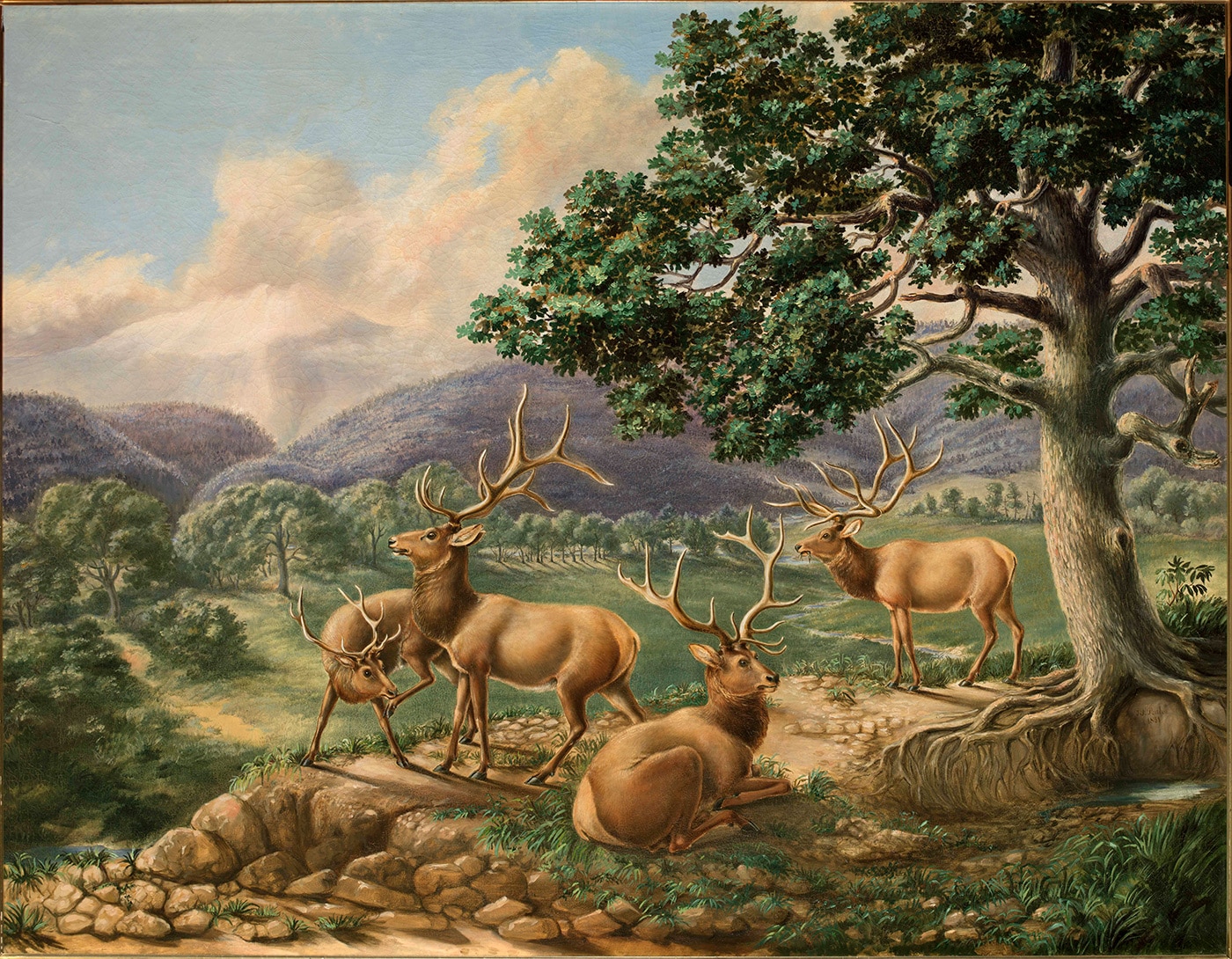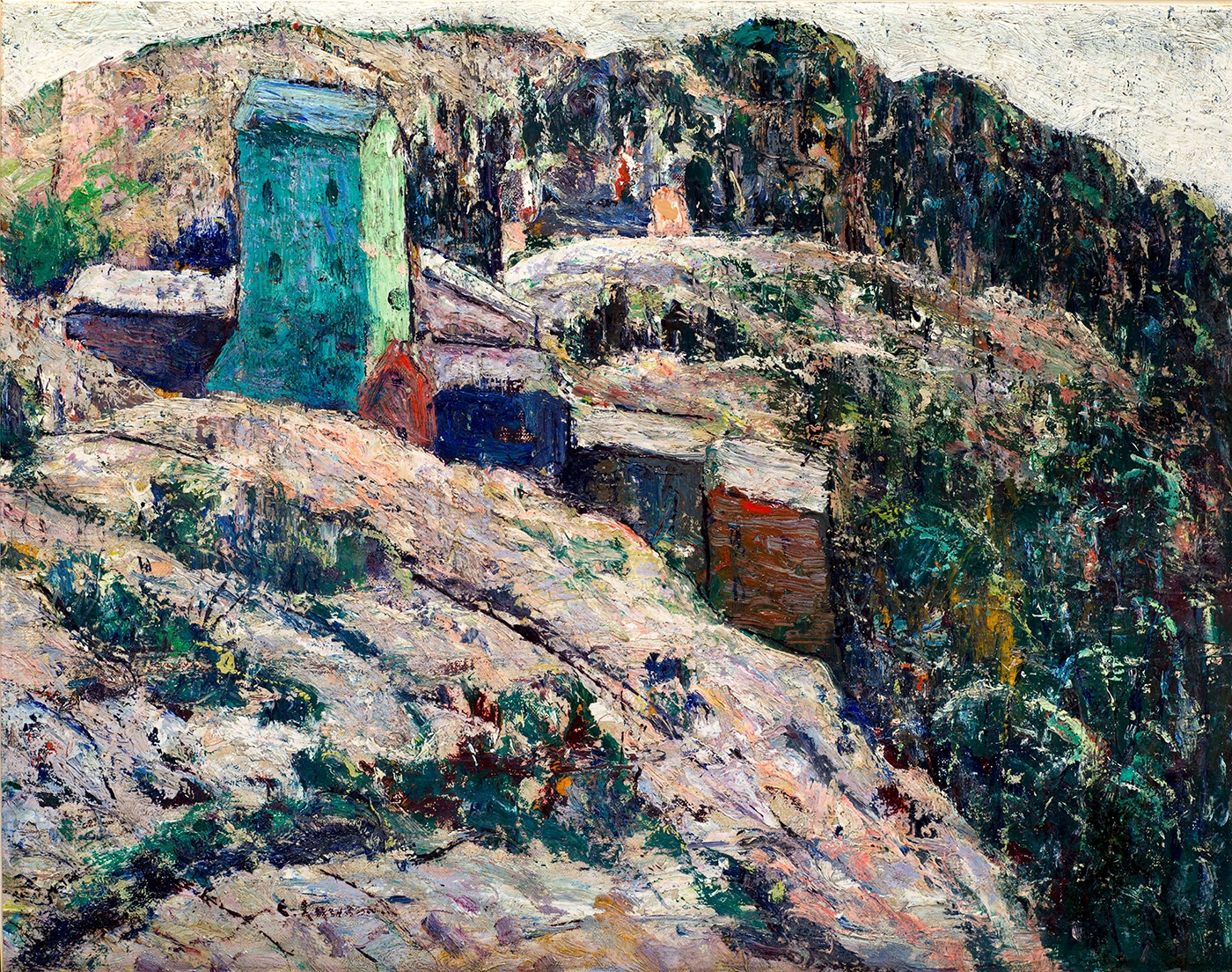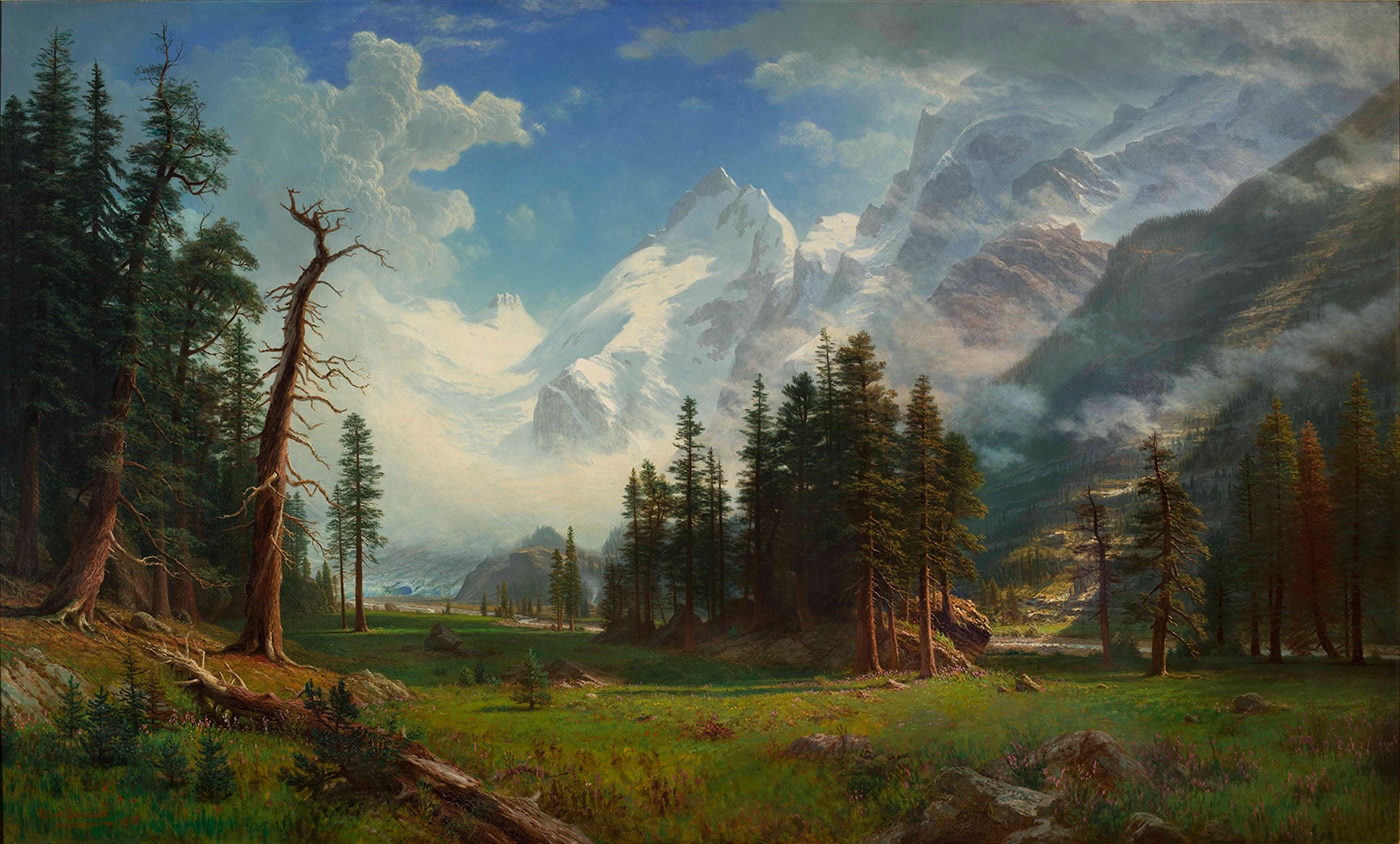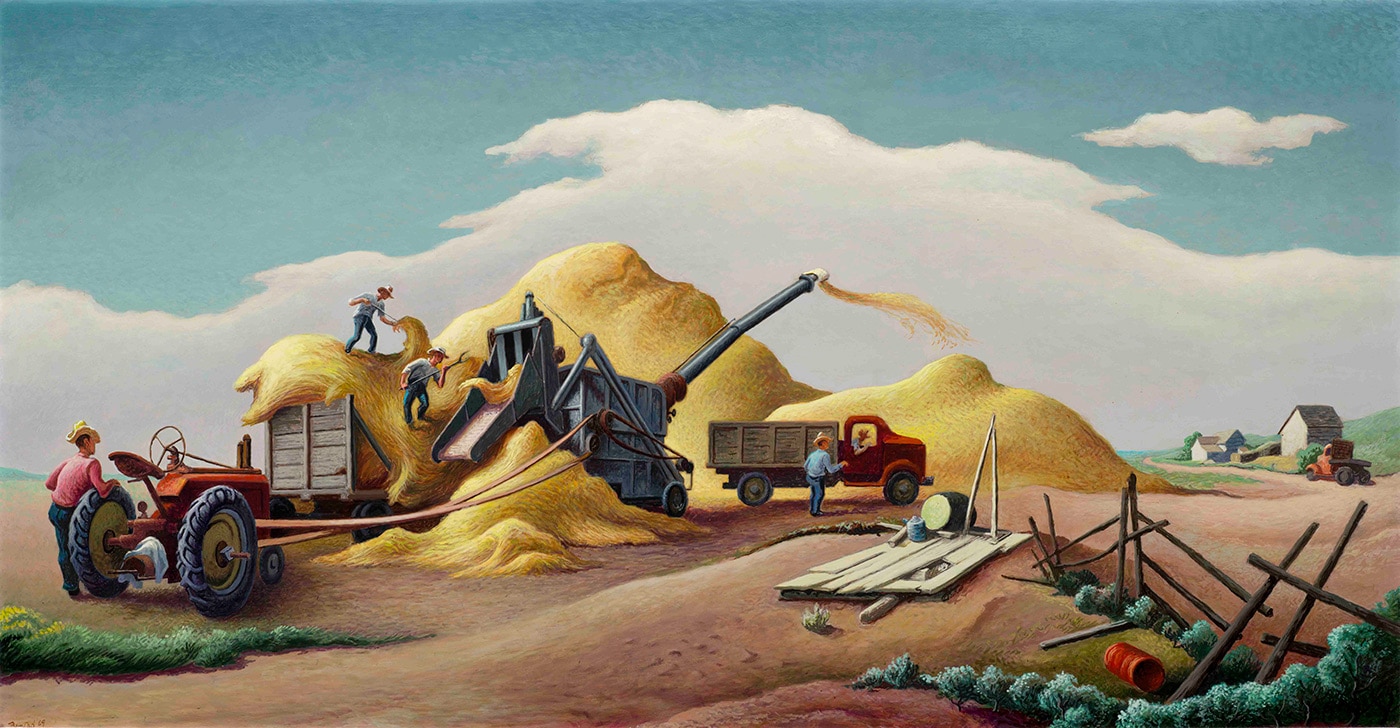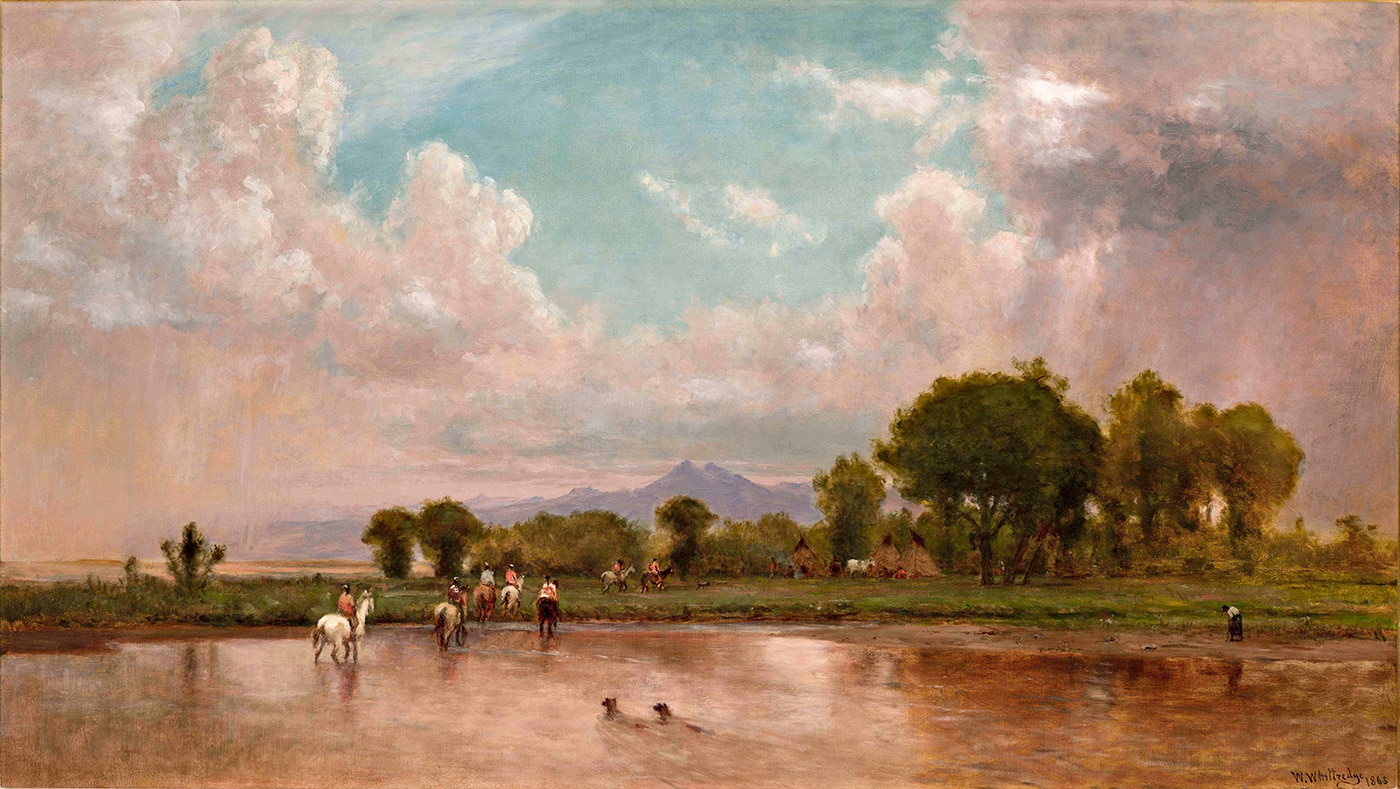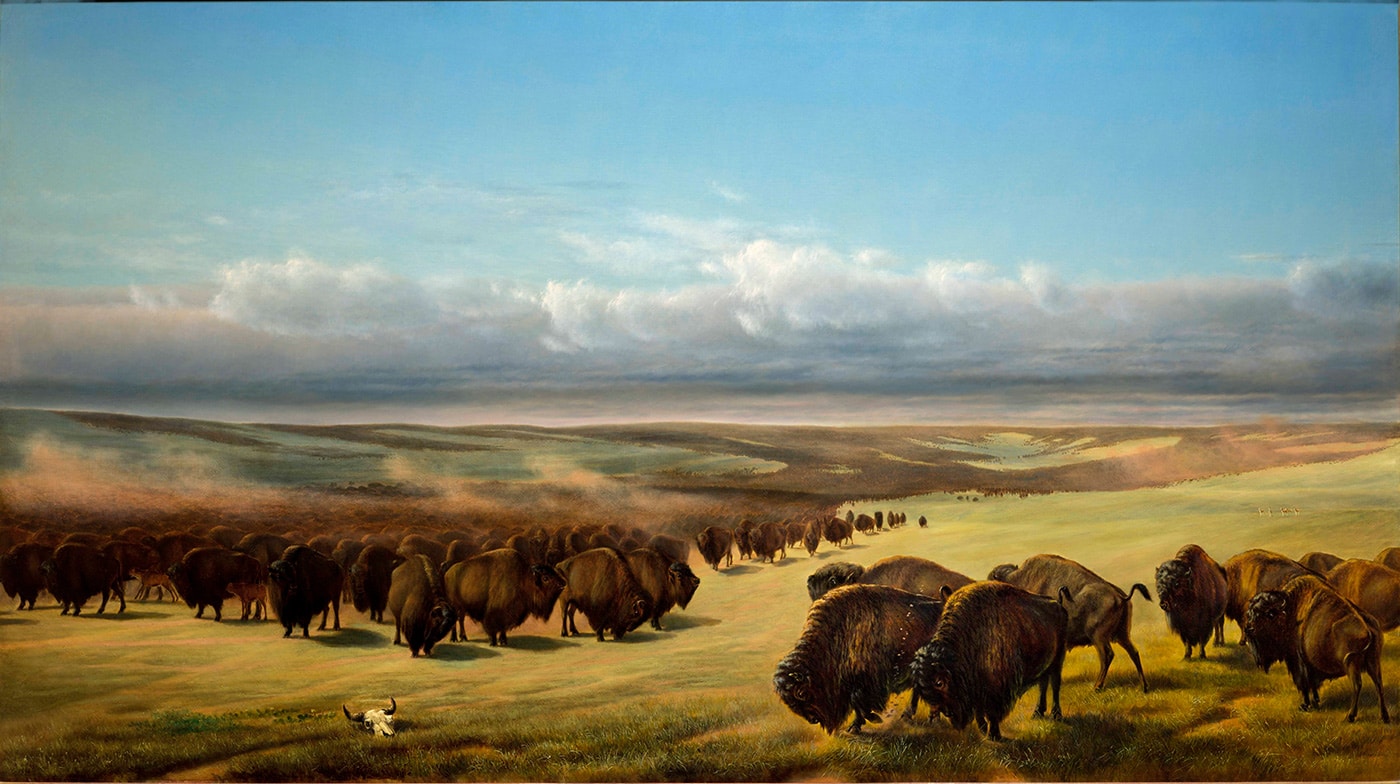Colorado and the Art of Geography
Background Information
At the beginning of the 19th century, lands west of the Mississippi, east of the Pacific Ocean, and north of the Rio Grande went through major political, environmental, and demographic changes in less than 100 years. In 1800 the bulk of the land that is now Colorado, the traditional home of many Native American tribes, was politically controlled by France and New Spain. France’s claims to the land ended with the Louisiana Purchase of 1803, and in 1848 Mexico surrendered its claims to the remaining parts of the state. The borders of Colorado were finally fixed in 1850, and the population boomed several times as gold was discovered in Denver, Cripple Creek, and several other sites. Colorado was admitted to the union as the 38th state on August 1, 1876.
Look Closer
Take a look at the American Museum of Western Art’s paintings of historic Colorado. Notice the diverse features of the landscape, including rugged mountains, desert canyons, vast plains, waterways, and mesas. Notice what natural resources (plants, animals, and waterways) are visible, and compare those with the man-made or mined resources you see in the artwork. Artists portrayed Colorado’s grandeur in paintings, and contributed to the nation’s interpretation of the state’s lands and resources. Several sites in Colorado are even named after artists who painted them. For example, the fourteener, Mount Bierstadt, is named after one of the first artists to hike, sketch, and paint the breathtaking scene from its peak, Albert Bierstadt.
Maps are created to capture the unique geography of the region, to show the best overland or water routes to get from point to point, or to show the distribution of natural and man-made resources. They can also illustrate important historic, political, cultural, or social sites. Using the paintings above as inspiration, think about how you would make a map to represent the unique features represented by the artwork.
Discussion Questions
- How does art represent physical space? How do maps represent physical space?
- How can art and maps show change over time?
- How are art and maps connected?
- How can maps help people understand history?
- How can maps help people understand art?
- Are maps art?
- What characteristics, regions, or resources will you focus on when you create your own map?
- What materials will you use to make a map?
- What materials will represent the characteristics or resources (Symbols)?
- How will people know what your symbols mean? Do you need a key?
Activity
Using discussion around historic paintings that depict Colorado, students will work to create an artistic textured topographic map of the state using found objects. Add the characteristics of each region, important political, social, and cultural sites, or research natural and man-made resources. The types and variety of work shown above can help direct the content of the maps students create.
Supplement the discussion with maps and research materials to deepen the outcomes of students’ content represented on their maps. Check out our resources below for more ideas!
Suggested Materials (per map):
• CO Base rectangle (cardboard, foam core, etc.)
• Fabric swatches of different textures and colors
• Beads, dried beans or lentils, noodles
• Ribbons, thread
• Egg-crate sections
• Cotton balls
• Greenery
• Pom-poms
• Glue or tape
• Markers, crayons, colored pencils
Grade levels: P-12 CO Standards
Visual Arts (2020)
Preschool 1.1 ; 2.1 ; 3.1 ; 4.1
Kindergarten 1.1 ; 2.1 ; 3.1 ; 4.1
1st Grade 1.1 ; 2.1 ; 3.1 ; 4.1
2nd Grade 1.1 ; 2.1 ; 3.1 ; 4.1
3rd Grade 1.1 ; 2.1-2 ; 3.1 ; 4.1
4th Grade 1.1-2 ; 2.1-2 ; 3.1-2 ; 4.1
5th Grade 1.1-2 ; 2.1-2 ; 3.1-2 ; 4.1
6th Grade 1.1-3 ; 2.1-2 ; 3.1-2 ; 4.1-3
7th Grade 1.1-3 ; 2.1-2 ; 3.1-3 ; 4.1-3
8th Grade 1.1-3 ; 2.1-2 ; 3.1-3 ; 4.1-2
High School 1.1-3 ; 2.1-3 ; 3.1-3 ; 4.1-3
Social Studies (2020)
Preschool 1.1 ; 2.1 ; 4.1
Kindergarten 1.1-2 ; 2.1-2
1st Grade 1.1-2 ; 2.1-2 ; 3.1 ; 4.1-2
2nd Grade 1.1-2 ; 2.1-2 ; 3.1
3rd Grade 1.1-2 ; 2.1 ; 4.1
4th Grade 1.1-2 ; 2.1-2 ; 3.1 ; 4.1
5th Grade 1.1 ; 2.1-2
6th Grade 1.1-2 ; 2.1-2
7th Grade 1.1
8th Grade 1.1-2 ; 2.1-2 ; 3.1
High School 1.1-3 ; 2.1-3 ; 3.1-2
Reading, Writing and Communicating (2020)
Preschool 2.1-2 ; 2.1 ; 4.1
Kindergarten 1.1-2 ; 3.1 ; 4.1
1st Grade 1.1-2 ; 4.1
2nd Grade 1.1-2 ; 4.1
3rd Grade 1.1-2 ; 4.1
4th Grade 1.1-2 ; 4.1
5th Grade 1.1-2 ; 4.1
6th Grade 1.1-2 ; 4.1
7th Grade 1.1 ; 4.1
8th Grade 1.1 ; 4.1
9th/10th Grade 1.1 ; 4.1
11th/12th Grade 1.1-2 ; 4.1
Science (2020)
2nd Grade 2.2 ; 3.2
4th Grade 3.1,3-4
Middle School 2.5-7,9 ; 3.3-5,8-11
High School 2.12-13 ; 3.3,8-11
Resources
Maps of Colorado
https://digitalcollections.nypl.org/items/72de1ac0-1fc9-0136-f72d-69b917c9ac23
https://libguides.colorado.edu/c.php?g=484941&p=3317173
http://blogs.denverpost.com/library/2015/05/28/vintage-1952-map-shows-colorados-classic-tourist-drives/10361/
https://geology.com/topographic-physical-map/colorado.shtml
http://coloradogeologicalsurvey.org/mineral-resources/industrial-minerals/
Downloads


